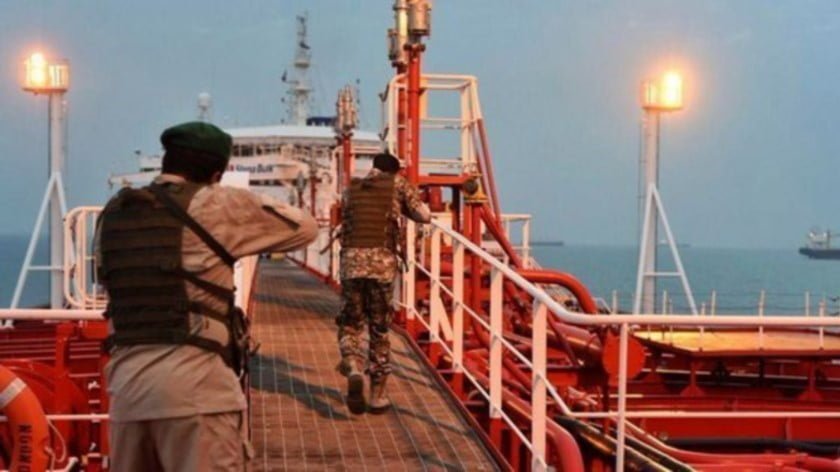Donald Trump’s Visit to China
November 8-9 marked Donald Trump’s visit to the PRC, which was his first trip there since his inauguration. We reiterate that Beijing became a central point for all stops over Donald Trump’s almost two-week long Asian tour.
However, it was already the second official meeting between the leaders of the two world powers. The first one took place in early April on US territory at Donald Trump’s estate in Florida.
Before his arrival to China, Donald Trump had visited Japan and South Korea to deal with various issues. In the capital of the USA’s key ally in the Asia-Pacific region, Tokyo, the parties were mainly busy with the “time check” regarding the decision-making strategy for the once again relevant issue of the DPRK’s nuclear program, whereas in the Republic of Korea, the politicians assessed the “situations on the ground”.
Beijing is, firstly, an important party involved in that issue, and secondly, holds the key to its solution. However, unlike Washington, it has been acting in both of these roles indirectly rather than directly.
The nuclear missile program (NMP) of the DPRK is a problem which has recently become the second most important issue in the general agenda of the US-China relations. Another equally important situation (in Washington’s opinion, at least) is economic relations. We remind the reader that the latter was the focus of Donald Trump’s election campaign rhetoric, as he touched upon the issue of relations with the USA’s main geopolitical opponent.
However, it should be pointed out that the two aforementioned issues don’t only revolve around the content and agenda of the relations between the two world global powers. Its essence is the recent trend of transforming the PRC into the second global power, which is a reality right now.
Moreover, the recent 19th Congress of the Chinese Communist Party (CCP) (which declared, among other things, the further centralisation and consolidation of the state governance system and the position of Xi Jinping within that system) established a policy aimed at securing a global leading position by the mid-21stcentury.
At all stages of human history, an influential leader would always perceive the potential loss of his or her position as a threat and would take measures (mostly of the military kind) to stay in power. It is China’s transformation into a rival of the US (as well as the possibility of China’s taking the world leader’s position from the States) which is the core of both the bilateral American-Chinese relations and the process of reformatting the global political landscape.
If there were no huge negative balance for the US (approximately 350 billion US dollars) in the bilateral trade and no nuclear program in the DPRK, other acute issues wound have emerge in the foreground of those relations. Like, for example, the problems generated by the ambiguous status of Taiwan, territorial disputes in the South China Sea, a potential military and political appearance of China in the Indian Ocean or a successful Chinese penetration of Africa.
The situation in the Korean Peninsula is just a part of the global American-Chinese playing field. The Chinese leadership, not Kim Jong-un’s regime, is the real opposing partner of Donald Trump in this context (although the public rhetoric is addressed to the North Korean leader). Undoubtedly, the USA has a potential to defeat, totally and instantaneously, the DPRK by delivering an unexpected preventive attack even without using its nuclear arsenal. This includes an attack on the artillery squadrons ‘hidden’ in the mountains, which, as was the case in Iraq 25 years ago, will simply not be able to return fire in time.
A total liquidation of the North Korean leadership is hardly on Washington’s agenda. This has been confirmed by the American Administration officials. Also, Tokyo needs no such outcome since Japan has been developing and purchasing state-of-the-art ammunition systems from the US and other countries, justifying this with the ‘threat from the DPRK.’
Three aircraft carrier strike groups deployed in the western part of the Pacific Ocean had only one real target on the eve of Donald Trump’s Asian tour – the PRC rather than the DPRK. Just like the Tomahawk missile launched in April, which coincided with Xi Jinping’ arrival to the USA, was addressed to the high-ranking Chinese guest rather than to the Assad regime.
The categories of the ‘moral’ qualities (cynicism, hypocrisy and double standards) are not applicable to real politics. The USA still possesses (for now) the most powerful military instrument to secure its national interests, which has been extensively demonstrated at the most suitable moments. Donald Trump’s Asian tour and his visit to Beijing was considered one of these suitable moments.
Beijing has no illusions about the real addressee of the recent demonstration of US military power. However, it hardly influenced the Chinese leadership position on the Korean agenda as a whole. The nuances of the rhetoric in the comments made by both leaders about a format for agreements on the aforementioned issue are worth noticing. Xi Jinping spoke about the denuclearisation of the Korean Peninsula, about solving this issue through dialogue and talks and about an efficient nuclear non-proliferation regime. At the same time, Donald Trump called on the implementation of all UN Security Council Resolutions on North Korea. He insisted on increasing the economic pressure on the DPRK to make it give up the “reckless and slippery path” it is on.
Almost all the headlines of the commentaries on the results of the US President’s visit to Beijing mention the stunning number 250. That is the total sum of billions of US dollars needed for the implementation of various bilateral documents on the cooperation in different economic spheres signed by the two leaders. For example, the participation of China in developing a large-dimension gas-production project in Alaska with gas transportation through a 1,000 km pipe to the coast of the state, where it will be liquefied and poured into refrigerating marine vessels for shipment mainly to China.
Certain comments should be presented in this context. Firstly, this means that many-year long cooperation projects between the two world largest economic powers with the bilateral trade volume amount to approximately 600 billion US dollars. Secondly, a majority of the signed projects are being implemented right now or are at the final stage of on-going negotiations. Thirdly, a majority of the same documents are letters of intent with an undefined future. It is unclear in what way the agreement for Chinese purchases of Boeing civil airliners for 37 billion dollars will live alongside the plans to develop the production of Chinese air-liners, one of which (С 919) has just completed a 4,000 km distance test flight.
The leading American media, like The New York Times and Bloomberg admit (with some reservations and scepticism) both the perspective and the significance of the realization of the majority of documents signed in Beijing. In particular, the media mention the issue of a huge deficit in the USA’s trade with the PRC and the anti-Chinese sanctions, which have recently been adopted by the US administration in the sphere of economic cooperation.
Last but not least, there were no signs of any discussion at the negotiating table in Beijing to revive the ten-year-old issue (Zbignev Brzezinski – Henry Kissinger) of the possibility of creating a “Big Two” to deal with the key world problems. Then again, the “Thucydides trap” (named after an historian and participant in the Peloponnesian war), luckily, did not mar the relations between the two global powers… yet.
The very mention of said ‘effect’, however, does little to bring optimism to the possible outcome of these relations., is available in these relations, offer little room for optimism. The discussion was started after an article by American political analyst Graham T. Allison was published in September 2015, titled “The Thucydides Trap: Are the U.S. and China Headed for War?”. The latest mention of the issue was on November 11 this year by the Chinese Global Times, that is, immediately after Donald Trump’s visit to Beijing
So far the two global powers have been busy with mutual manoeuvring in political “chores” (i.e. the DPRK’s nuclear program) and with long-term fundamental issues, which are generated by various trends and projects in the sphere of economic cooperation.
The growing roles of EU and Japan in the actions aimed at forming new patterns in the world economy are extremely notable in such context, a fact which was repeatedly discussed by the New Eastern Outlook. Particularly, the possibility of bringing the Trans-Pacific Partnership Project to life without the USA deserves special consideration; it was discussed under the auspices of Japanese Prime-Minister Shinzo Abe at the APEC summit in Da Nang. Donald Trump arrived there directly from Beijing but did not take part in the discussions.
By Vladimir Terekhov
Source: New Eastern Outlook







